he 13-inch laptop space is full of some great machines. The size has become a bit less popular in the last couple of years, as 14-inch laptops have started to take over, but if you want the smallest laptop possible you can find one or two great options.
The Apple MacBook Air M3 is one such machine. It’s fast, incredibly well-built, and has class-leading battery life. But the Asus ProArt PX13 brings enhanced performance to the fight. Is that enough to win a top spot?
Specs and configurations
| Asus ProArt PX13 | Apple MacBook Air M3 (13-inch) | |
| Dimensions | 11.74 inches x 8.26 inches x 0.62-0.70 inches | 11.97 inches x 8.46 inches x 0.44 inches |
| Weight | 3.04 pounds | 2.7 pounds |
| Processor | AMD Ryzen AI 9 HX 370 | Apple M3 (8-core) |
| Graphics | AMD Radeon 890M Nvidia GeForce RTX 4050 Nvidia GeForce RTX 4060 |
8 GPU cores 10 GPU cores |
| RAM | 32GB | 8GB 16GB 24GB |
| Display | 13.3-inch 16:10 3K (2880 x 1800) OLED, 60Hz | 13.6-inch 16:10 Liquid Retina (2560 x 1664) IPS |
| Storage | 1TB SSD | 256GB SSD 512GB SSD 1TB SSD 2TB SSD |
| Touch | Yes | No |
| Ports | 2 x USB-C USB4 1 x USB-A 3.2 Gen 2 1 x HDMI 2.1 1 x 3.5mm audio jack 1 x microSD card reader |
2 x USB-C with Thunderbolt 4 1 x 3.5mm audio jack 1 x MagSafe 3 |
| Wireless | Wi-Fi 7 and Bluetooth 5.4 | Wi-Fi 6E and Bluetooth 5.3 |
| Webcam | 1080p with infrared camera for Windows 11 Hello facial recognition | 1080p |
| Operating system | Windows 11 | macOS Sonoma |
| Battery | 73 watt-hour | 52.6 watt-hours |
| Price | $1,700+ | $1,099+ |
| Rating | 4 out of 5 stars | 4 out of 5 stars |
Asus only provides two choices with the ProArt PX13. The base model comes with an AMD Ryzen AI 9 HX 370 chipset, 32GB of RAM, a 1TB SSD, an Nvidia GeForce RTX 4050 GPU, and a 13.3-inch 3K OLED display. For $200, you can upgrade to an RTX 4060 that will provide significantly faster graphics performance.
The MacBook Air M3 offers many more configurations. You can choose either an 8-core CPU/8-core GPU M3 chipset or opt for the version with 10 GPU cores. The laptops starts at
The MacBook Air M3 is less expensive at the low end and slightly more expensive at the high end.
Design
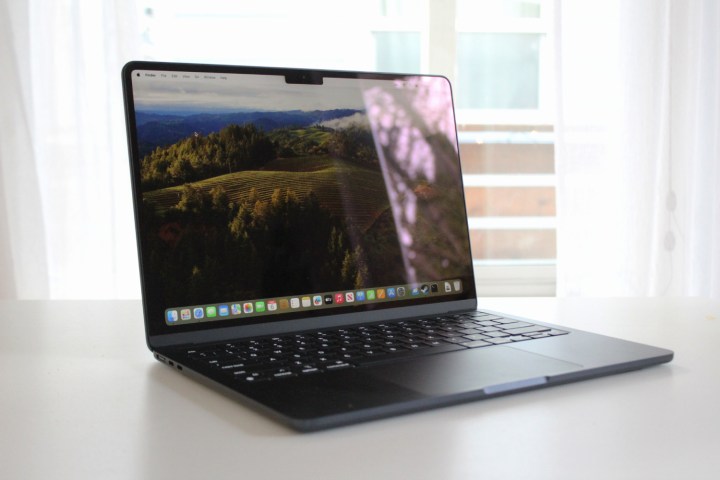
The MacBook Air M3 continues the new design aesthetic that Apple solidified when the M2 version finally did away with the wedged-shaped MacBook Air. It now has the extremely minimalist, yet somehow elegant, blocky design that’s machined out of a single chunk of aluminum. It’s available in several colors, including Midnight, Starlight, Space Gray, and Silver. The design combines with the MacBook Air’s incredibly thin chassis to accentuate Apple’s fastidious aesthetic. The ProArt PX13 exudes a different look. It’s bolder, with aggressive venting that’s not just functional but hints at powerful components inside. It’s not nearly as thin, so it’s more imposing. Which is a better aesthetic is down to personal preference.
Their build qualities are equally as good. Both have solid chassis, with lids that are a little flexible. This latter bit is more surprising for a MacBook, given that they’re usually rock-solid. But in Apple’s pursuit of thinness this time around, something had to give. But that’s also unusual for Asus, which tends to also produce incredibly rigid laptops. So, you won’t be choosing either based on build quality alone.
The MacBook Air M3 benefits from the best keyboard around, Apple’s Magic Keyboard. The keycaps are large and the spacing is perfect, with switches that aren’t deep but are incredibly snappy and precise. That’s not to say that the ProArt PX13’s keyboard, with its own comfortable layout and design and deeper but still springy switches, isn’t good. If you dislike really shallow keys, then you might prefer the Asus. The touchpad is a different matter. The MacBook Air M3 also has Apple’s Force Touch haptic touchpad with the Force Click feature, and it’s a lot better than the ProArt PX13’s more mundane mechanical version. The Asus does have a touch display, though, where the MacBook Air M3 does not.
Connectivity is also better on the ProArt PX13. It has an equal number of fast ports, but then also a couple of legacy ports as well. Both laptops have proprietary power connections, in Apple’s case it’s excellent MagSafe 3. And then the ProArt PX13 also has a microSD card reader and more up-to-date wireless connectivity
Finally, both laptops have 1080p webcams with similar quality. The ProArt PX13 has an infrared camera for Windows 11 Hello facial recognition, whereas the MacBook Air M3 has a Touch ID fingerprint reader built into the power button. Both are quick and secure ways for logging in without a password.
Performance
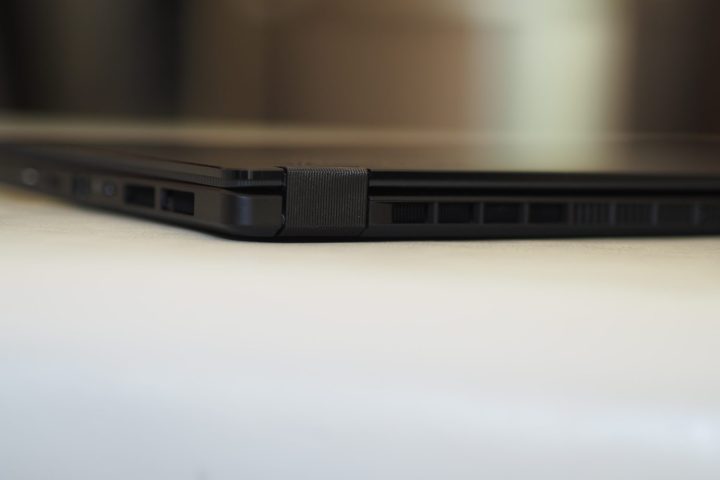
The ProArt PX13 is one of the first laptops introduced with AMD’s Ryzen AI 9 HX 370 chipset, which gets its name from its neural processing unit (NPU) that runs at up to 50 tera operations per second (TOPS). When introduced, that was the fastest NPU available, which makes the chipset a good option for on-device AI performance that’s more efficient than the GPU that’s inherently faster. The Ryzen AI 9 HX 370 is a 12-core CPU with 24 threads and a 16-core integrated GPU. The MacBook Air M3 uses Apple Silicon’s M3 chipset in either 8-core CPU/8-core GPU or 8-core CPU/10-core GPU iterations. Its Neural Engine runs at a slower 18 TOPS.
In our benchmarks, the ProArt PX13 is faster in multi-core CPU performance and slower in single-core. While the M3’s GPU is faster than the AMD chipset’s Radeon graphics, the ProArt PX13 is available with two discrete GPU options, the Nvidia GeForce RTX 4050 or the faster RTX 4060. I reviewed with the RTX 4050, and it was able to push the ProArt PX13 to faster performance in Adobe’s Premiere Pro than the MacBook Air M3 was able to achieve. The RTX 4060 version of the Asus would be even faster.
If you’re primarily a productivity user, then either laptop will be more than fast enough. But thanks to its discrete graphics options, gamers and creators will find the ProArt PX13 to be a significantly faster 13-inch laptop. It’s worth noting that the MacBook Air M3 is fanless and so runs completely silently, while the ProArt PX13 has fans that can get quite loud.
| Geekbench 6 (single/multi) |
Cinebench R24 (single/multi) |
Pugetbench Premiere Pro |
|
| Asus ProArt PX13 (AMD Ryzen AI 9 HX 370 / RTX 4050) |
2,690 / 14,423 | 116 / 974 | 5,292 |
| Apple MacBook Air M3 (M3 8/10) |
3,102 / 12,078 | 141 / 601 | 3,633 |
Display
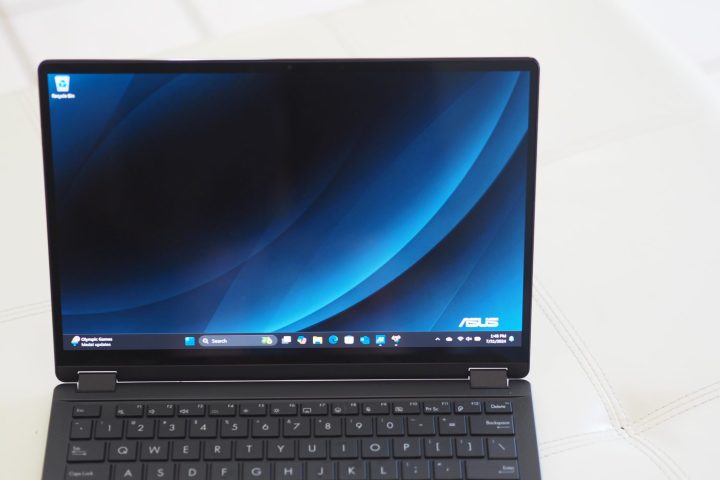
Asus has been a pioneer in pushing OLED technology to more laptops, and the PX13 maintains that tradition. Its 13.3-inch 3K (2880 by 1800) OLED display is excellent, with the technology’s usual deep contrast and inky blacks and bright, accurate colors. The MacBook Air M3 uses a very good 13.6-inch 2560 by 1664 IPS display that’s a lot brighter but falls short in the other important metrics, including sharpness.
Both displays are very good, but the ProArt PX13’s is better. It will particularly please media consumers and creators.
| Asus ProArt PX13 (OLED) |
Apple MacBook Air M3 (IPS) |
|
| Brightness (nits) |
380 | 495 |
| AdobeRGB gamut | 97 | 87 |
| sRGB gamut | 100 | 100 |
| DCI-P3 gamut | 100 | 99 |
| Contrast | 26,510:1 | 1,480:1 |
| Accuracy (DeltaE, lower is better) |
0.64 | 1.24 |
Portability
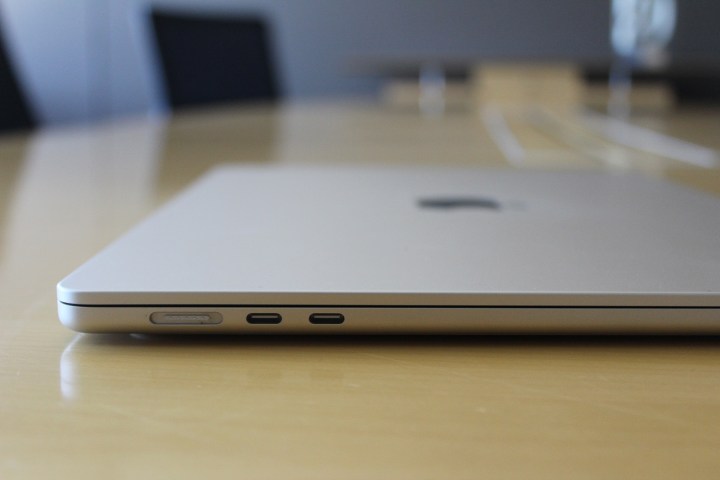
Even thought it has a larger display, the MacBook Air M3 is barely larger in width and height than the ProArt PX13. It’s also lighter and incredibly thin by comparison. Neither of these laptops is very hard to lug around, but the MacBook is noticeably more portable.
Battery life is an even more significant differentiator. The ProArt PX 13 does reasonably well for a powerful 13-inch laptop with a power-hungry OLED display. But, the MacBook Air M3, with its significantly smaller battery, still manages to outclass it. That should be no surprise, as Apple Silicon chipsets remain the most efficient available today.
| Web | Video | Cinebench 2024 |
|
| Asus ProArt PX13 (AMD Ryzen AI 9 HX 370) |
8 hours, 7 minutes | 11 hours, 12 minutes | 1 hour, 12 minutes |
| Apple MacBook Air M3 (M3 8/10) |
19 hours, 38 minutes | 19 hours, 39 minutes | 3 hours, 27 minutes |
Sometimes it’s hard to anoint a winner
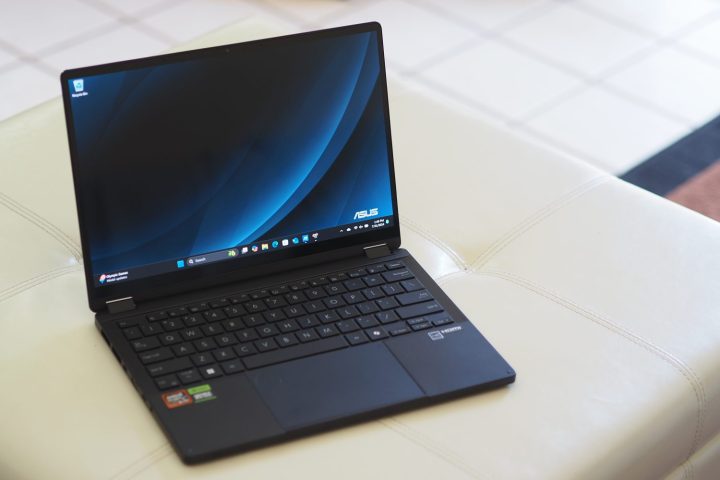
The MacBook Air M3 is a great laptop. Full stop. It provides excellent productivity performance while running cool and quiet, and its battery life is better than any other 13-inch laptop. It’s not even close, really. But it’s not the best choice for gamers or creators.
Enter the ProArt PX13. It combines AMD’s latest chipset with a discrete GPU for an unusually fast diminutive laptop for gaming and creative work. But its battery life isn’t as good. Both laptops are around the same price, although the MacBook Air M3 can be had for less albeit with lesser components. So, your choice comes down to performance or longevity.












